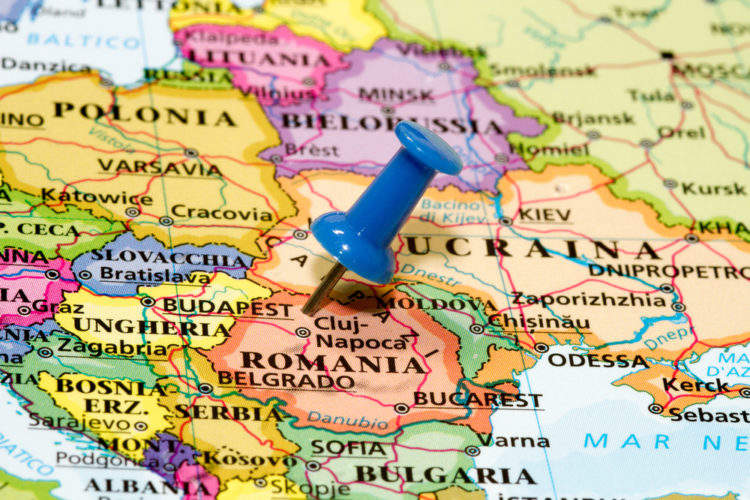The EIB Group has guaranteed hundreds of millions of euros in funding for SMEs in Romania. Saad Ahmed speaks to Corina Creţu, European Commissioner for Regional Policy, about the EIB’s goals and why Romania is a top priority
“I took over the Regional Policy portfolio in November 2014 with one clear goal in mind: making sure that our policy delivers on its promises towards every EU citizen,” Corina Creţu, European Commissioner for Regional Policy, tells Leasing Life.
Romania is booming. Between January and March 2017, the country was the fastest-growing economy in Europe. The International Monetary Fund (IMF) recorded a 5.7% GDP increase, and expects Romania to achieve economic growth of 6.5% in 2017.
Romania has been the beneficiary of inward investment worth millions recently.
Over the past few months, pan-continental institutions and funders such as the European Investment Bank (EIB), the European Investment Fund (EIF), and the European Bank for Reconstruction and Development (EBRD) have shown significant and increasing interest.
Through its funds and initiatives, the EU has provided more than €750m in loan guarantees for micro, small and medium-sized enterprises in Romania. The EBRD recently pumped €20m into the country in the form of a loan to BT Leasing, its fourth to the same lessor.
How well do you really know your competitors?
Access the most comprehensive Company Profiles on the market, powered by GlobalData. Save hours of research. Gain competitive edge.

Thank you!
Your download email will arrive shortly
Not ready to buy yet? Download a free sample
We are confident about the unique quality of our Company Profiles. However, we want you to make the most beneficial decision for your business, so we offer a free sample that you can download by submitting the below form
By GlobalDataWith Romania’s business climate benefiting from extensive SME funding, Leasing Life went to the heart of the EU to investigate why the country was such a target for investment.
Building up
Romania was one of the countries that joined the EU during its expansion in 2004.
The aim of the EU’s funding initiatives is to bring parity across the continent, according to Creţu. “We are very pleased to see that Romania has been one of the fastest-catching-up countries after its accession to the EU,” she says. “The role of the EU financial support is to confirm and further strengthen this tendency while addressing socio-economic disparities within Romania.”
Creţu says the aim is to empower Romanian businesses to fully participate in the economy, both in Romania, and the continent as a whole.
“We launched the Lagging Regions initiative, with the intent to improve the policy mix and enhance the impact and effectiveness of support from EU funding,” she says, adding that it focused on North East and North West Romania, areas where economic disparity was most apparent, to act as pilots for the wider strategy.
Creţu tells Leasing Life that a mix of funding sources including European Structural and Investment Funds (ESIFs), the EIB, and EIF combine in order to power lending through the EU’s SME Initiative.
“€100m from the European Regional Development Fund contribute to the deployment of this EU initiative in Romania. In all, this investment will generate more than €540m in new loans,” she says.
The Investment Plan for Europe, the so-called Juncker Plan, was designed to increase liquidity in the European market. The European Fund for Strategic Investments (EFSI) – one of its “major pillars” according to Creţu – combines an EU budget guarantee and resources from the EIB. The Cohesion Fund is aimed at EU member states that have a gross national income at less than 90% of the EU average.
Romania is among the 15 member states set to benefit from the €63.4bn provided for the period 2014-2020. Creţu says that in combination with EFSI, the funds provide technical assistance and improve the business climate in a target country.
Aside from EU institutions and policy, Romania has attracted significant funds from public and private investors. One such institution pumping money into the country is the EBRD, which has provided loans to leasing companies in Romania for the purposes of SME lending.
Creţu says that the EBRD provides access to funds, but also helps to power sectoral reforms, which she says will boost the country’s investment climate. “In many areas the EBRD and ESIFs are working together and providing complementary funding, for instance for energy efficiency or urban transport,” she explains.
Step by step
“EU funding is provided to all member states, but with special attention to those that are lagging behind, aiming to help them address structural challenges and outstanding disparities,” Creţu tells Leasing Life.
While Romania is a significant beneficiary of EU funds, initiatives such as the Juncker Plan are deployed across the continent to provide support for small businesses, and increase the scope of the European economy.
The EIB Group, Creţu explains, works closely with the governments of EU member states, providing advice and aiding the delivery of funds to their intended recipients.
It works through intermediaries such as banks and leasing companies to provide support for small businesses across Europe.
In 2014, Romania released a National Strategy for Competitiveness, which Creţu says helped outline the sectors where the European Regional Development Fund (ERDF) would target SME funding.
“[These include] supporting investments in innovation, technology take-up, and e-commerce. In addition, links between research institutes, universities and companies are promoted, in particular in these areas Romania and its regions have a competitive advantage in Europe,” she says.
Asked what would count as success for the funding programmes, Creţu refers to the ESIF Open Data portal, which displays funding targets and progress, country-by-country. The entry for Romania shows an EU country budget of €30.8bn for the period 2014-2016 allotted to Romania, joining €5.6bn in Romanian national funding.
At the time of writing, approximately 10% of the total cost had been decided. Among the targets for the funding, Creţu counts increases in productivity, widening access to finance, and the mobilisation of private resources.
“The overall macroeconomic impact on jobs and economic growth will also be assessed at the end of the programming period in the ex-post evaluation,” she says.
The SME Initiative is currently being implemented by six member states: Romania, Bulgaria, Malta, Italy, Spain and Finland. Creţu says the initiatives are open to all member states, and urges interested nations to come on board.
“The commission welcomes any new member state willing to take on board this initiative and to join the six member states already implementing SMEI,” she says, adding that the European Commission (EC) would like to extend the length of the initiative.
“In order to allow new member states to implement the SME Initiative, the Commission proposed a modification of the legal basis to prolong the initiative, which is still in the legislative process,” she says.
The EU spends a large amount of its budget on building up member states to achieve parity across the polity. “One third of the EU’s budget is set aside for projects to support job creation, business competitiveness, economic growth, sustainable development – all aspects that aim to improve citizens’ quality of life, and we need to make the most of it,” Creţu says.
Solidarity, she continues, is the guiding principle behind the EU’s commitment to funding underserved regions, and improving infrastructure and economic linkages across the union.
Creţu says that following EU President Juncker’s launch of the debate on the future of Europe in March, she worked with a fellow commissioner to develop a reflection paper.
“Our policy is an expression of solidarity that strengthens economic, social and territorial cohesion, fighting inequality and delivering results that benefit all inhabitants in the EU,” Cretu says.
“It is my current priority to prepare its future design and ensure that it continues to bring great results as the main investment tool of the EU in the next financial period, beyond 2020.”








